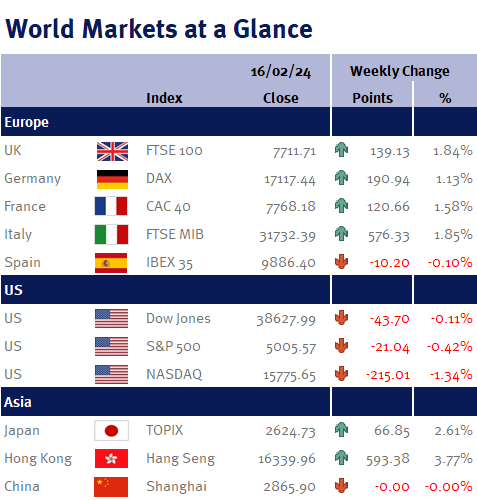Notably, this recession’s onset, the mildest since the 1970s, doesn’t evoke the severity of past economic crises, like the 1980 recession or the aftermath of the 2009 financial crisis, when GDP plummeted by over 4%. The UK is not alone with weak economic growth, The European Union narrowly avoided recession in the second half of 2023 while Japan confirmed its economy had also dipped into a recession following Q4.
Whilst the minor contraction in the economy suggests a potential blip rather than a substantial downturn, it poses more of a challenge for Prime Minister Rishi Sunak, who committed to economic growth last year. As a general election looms, Sunak faces the task of garnering voter support following this result.
UK retail sales offered a more optimistic outlook, as sales volumes experienced a significant rebound of 3.4% on month in January 2024, marking the most substantial monthly increase since April 2021. The robustness of the job market, coupled with wage growth fosters optimism for a quick economic recovery.
After five weeks of positive results, US markets witnessed a slight pullback as investors digested a mixed bag of data. Unexpectedly, hot consumer prices along with weaker retail sales sparked speculation about when the Federal Reserve will cut interest rates.
Despite concerns over hotter-than-expected consumer prices, signs of weaker growth offered some relief. US retail sales contracted by 0.8% month-over-month in January 2024, worse than the market’s anticipated 0.1% decline, although signs of weaker growth seemed to help calm inflation concerns. The fall was in the aftermath of the holiday shopping season and adverse weather conditions. On Friday, the producer price index (PPI) came in stronger than expected, though not by much. The PPI rose by 0.3% in January, rather than the 0.1%. The latest data has prompted a shift in rate cut expectations as the Federal Reserve awaits confirmation that inflation has hit the 2% target.
Coming up this week, China’s interest rate decisions, Fed Minutes from their latest meeting, and PMI data for Eurozone, US, and UK will shape global market trends.
Kate Mimnagh, Portfolio Economist



